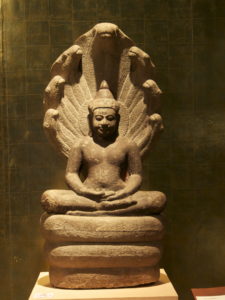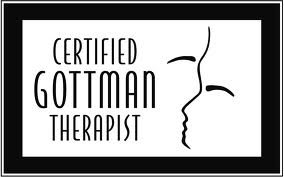 Mindfulness Meditation: Using the Body Scan as a Focus
Mindfulness Meditation: Using the Body Scan as a Focus
Body-scan meditation focuses deliberate attention on the body without judgment or wanting anything to come from it. This isn’t a traditional relaxation method; people may feel peaceful, but they can also feel antsy, impatient, irritated, and hungry. That’s the point: You can experience these feelings, thoughts, and sensations without needing to take them further. Just notice, and then move on to the next part of the body.
With physical pain, for example, our thoughts might go something like this: “My back hurts, that muscle ache could be a spasm or what if it is bone cancer, maybe I should have an MRI, or maybe I need to go to a chiropractor, but that could mean I have to go three times a week, how will I get off work? My wife is going to be mad at me for spending the money, but then, damn that! If I’m hurting, then I need to get out of pain. She has no business keeping me out of the doctor’s office. I deserve to spend money on me sometimes. Just like when I was a kid, and my mother didn’t take seriously the pain in my arm, and it was broken! I went for weeks before she took me to the doctor… ”
The thoughts go on like that. Before you know it, you’re fuming; your body is more tense than when you began. You feel irritation not only at your wife, but your mother, the medical system, the ACA, and your insurance company. You probably feel sorry for yourself. All that strong emotion gets internalized into your pores, your muscles and sinews, and your heart. Your focus on your body ended ten minutes into the 45-minute practice: all you can think about is getting up and googling “back pain.”
A mindful alternative might go like this: “My back aches, oh, okay. It hurts now, that is how it is right now.” And then you rejoin your yourself, and think, “Noticing my right shoulder…noticing the feelings present there…I bring my attention to my right arm, noticing what is there to be felt…” At the end of the body scan, you open your eyes and realize that you have stayed with the practice for most of the 45 minutes. Your mind wandered, but you didn’t end up becoming angry with your partner, your mother, the medical system, and your poor luck.
Living with all our emotions can be difficult. It’s not uncommon for feelings to be transformed into physical sensations that can very possibly develop into an illness. You didn’t cause the illness, but being in prolonged or frequent physical and emotional turmoil puts the autonomic nervous system (ANS) into a constant state of over-arousal, a kind of hyper-drive that leads to difficulty sleeping, tense muscles, fretting, and worry.
In his poem fragment “Eternity,” William Blake wrote about the elusiveness of joy:
He who binds to himself a joy
Does the winged life destroy
He who kisses the joy as it flies
Lives in eternity’s sunrise.
Happiness studies show that no one is happy all the time. In the same way, wisdom is not always with us. We have moments where it all comes together, and then it disperses again. Focusing on the body with awareness is a way to allow wisdom to emerge without trying.
How does wisdom enter in? In the second, alternative, body scan you notice the pain in your back, move on, and finish the practice. You’re more rested because you didn’t get attached to any one thought. Then sometime later in the day, you do a kindness to yourself. You think, “I’m feeling some ache in my back; I’ll listen to my body over the next day and see if I should pursue it further. But for now, I’ll take care to not overdo the wedding, and to come inside and rest.”
That is wisdom. It’s not Socrates, or Jesus, or Buddha; it’s your own wisdom that emerges because of your kindness to yourself, and because you didn’t let yourself go down the rabbit hole of your thoughts.
Below is a thirty-minute Body Scan Mindfulness Meditation. It is one of the first meditations used in Dr. Kabat-Zinn’s Mindfulness-based Stress Reduction class (MBSR) and is also a core meditation used in Mindfulness-based Cognitive Therapy (MBCT). It is best done laying down, with your eyes closed.
Body Scan Mindfulness Meditation


 Being mindful when doing daily tasks is a lesson in informal meditation practice.
Being mindful when doing daily tasks is a lesson in informal meditation practice.
 With changes in health care following the Affordable Care Act, providers will soon emphasize health promotion over disease management. Integrating alternative and complementary approaches to well-being will provide patients with ways to manage their health and provide a foundation for preventing new health problems. Complementary and Alternative Medicine (CAM) has been practiced for the last 25+ years in the United States, but many of these approaches have a much longer history: well over 2,000 years, in the case of yoga. In the last decade, studies examining the effects of yoga have increased substantially—important for yoga’s acceptance as a mainstream treatment.
With changes in health care following the Affordable Care Act, providers will soon emphasize health promotion over disease management. Integrating alternative and complementary approaches to well-being will provide patients with ways to manage their health and provide a foundation for preventing new health problems. Complementary and Alternative Medicine (CAM) has been practiced for the last 25+ years in the United States, but many of these approaches have a much longer history: well over 2,000 years, in the case of yoga. In the last decade, studies examining the effects of yoga have increased substantially—important for yoga’s acceptance as a mainstream treatment.


